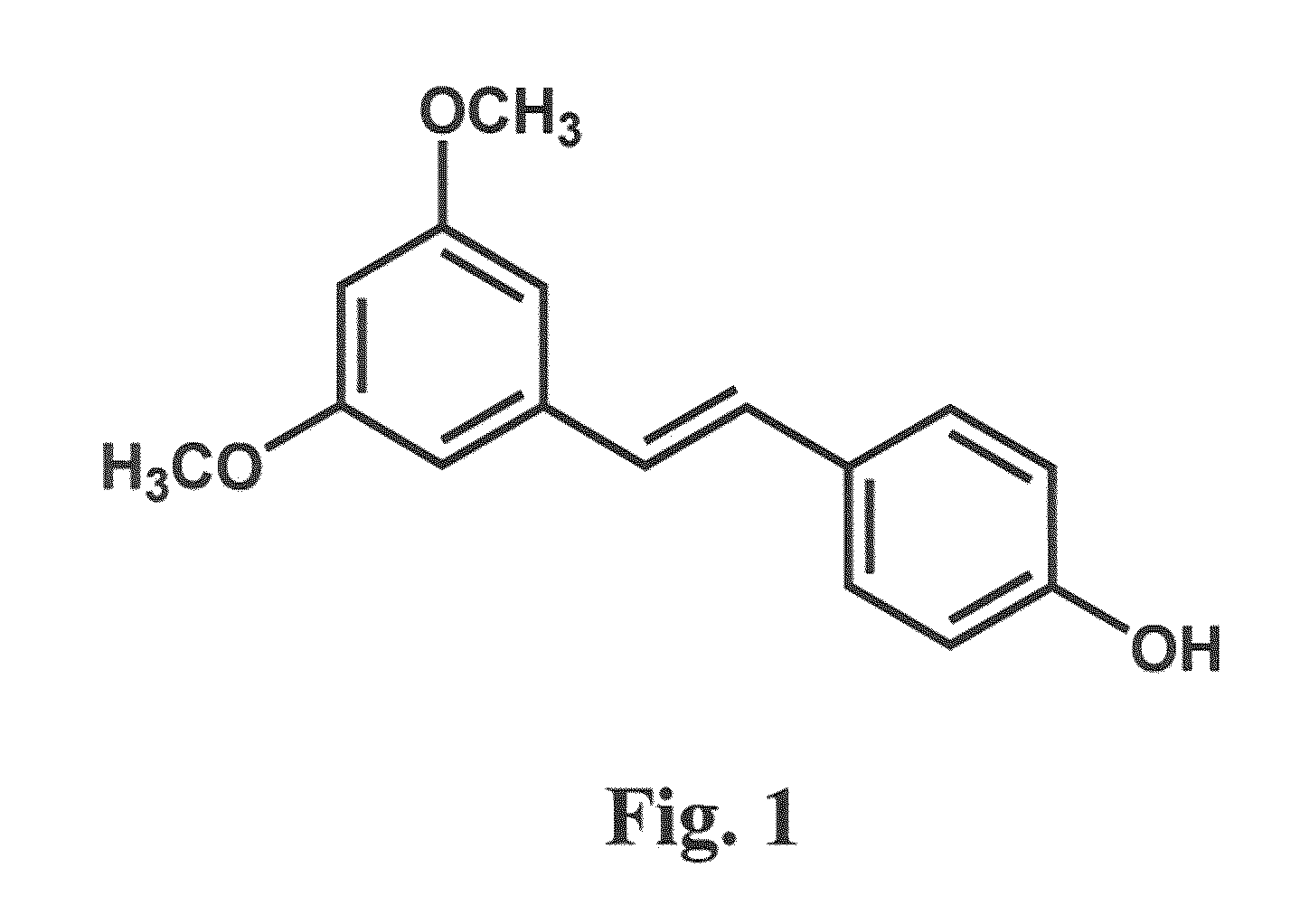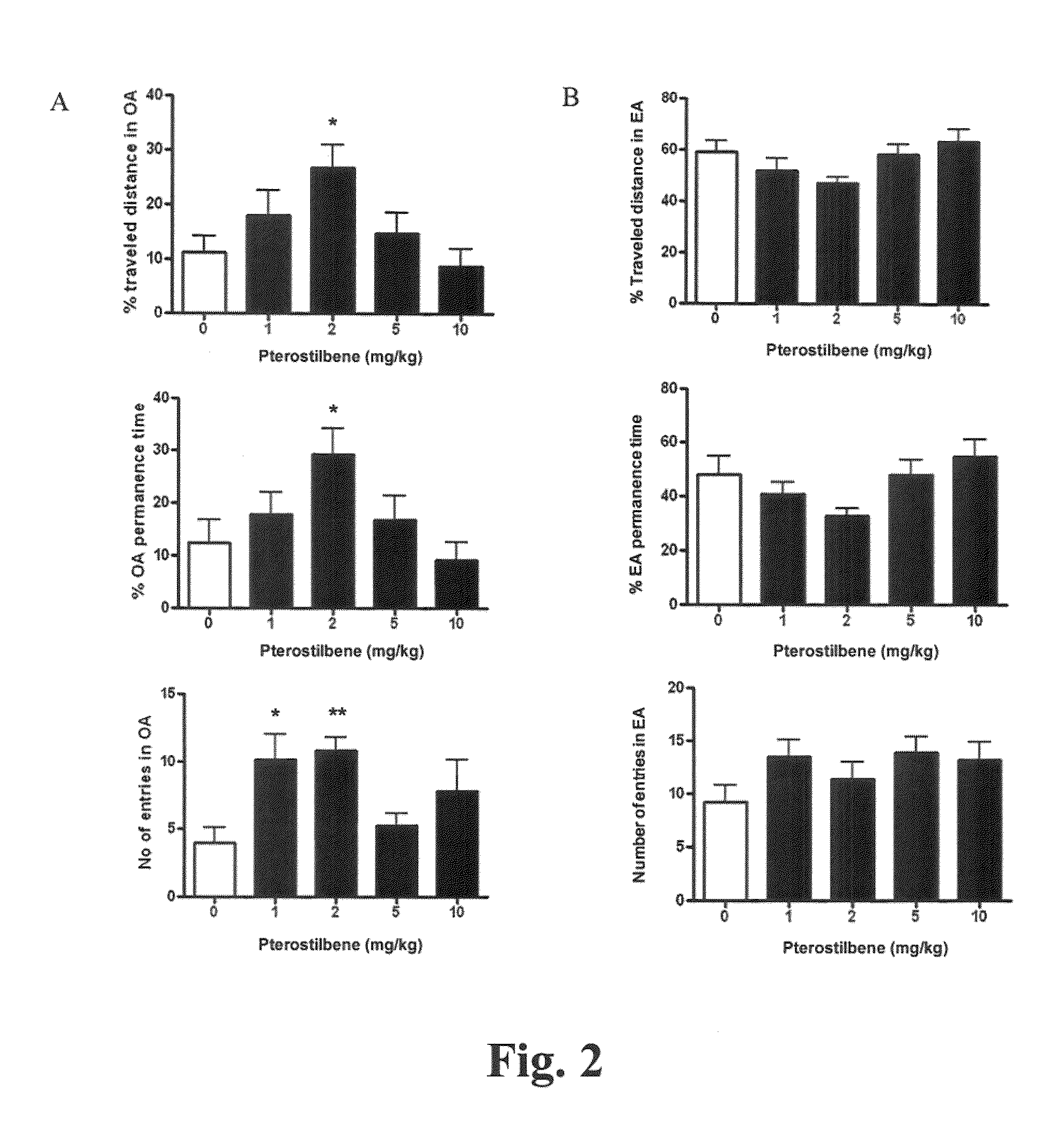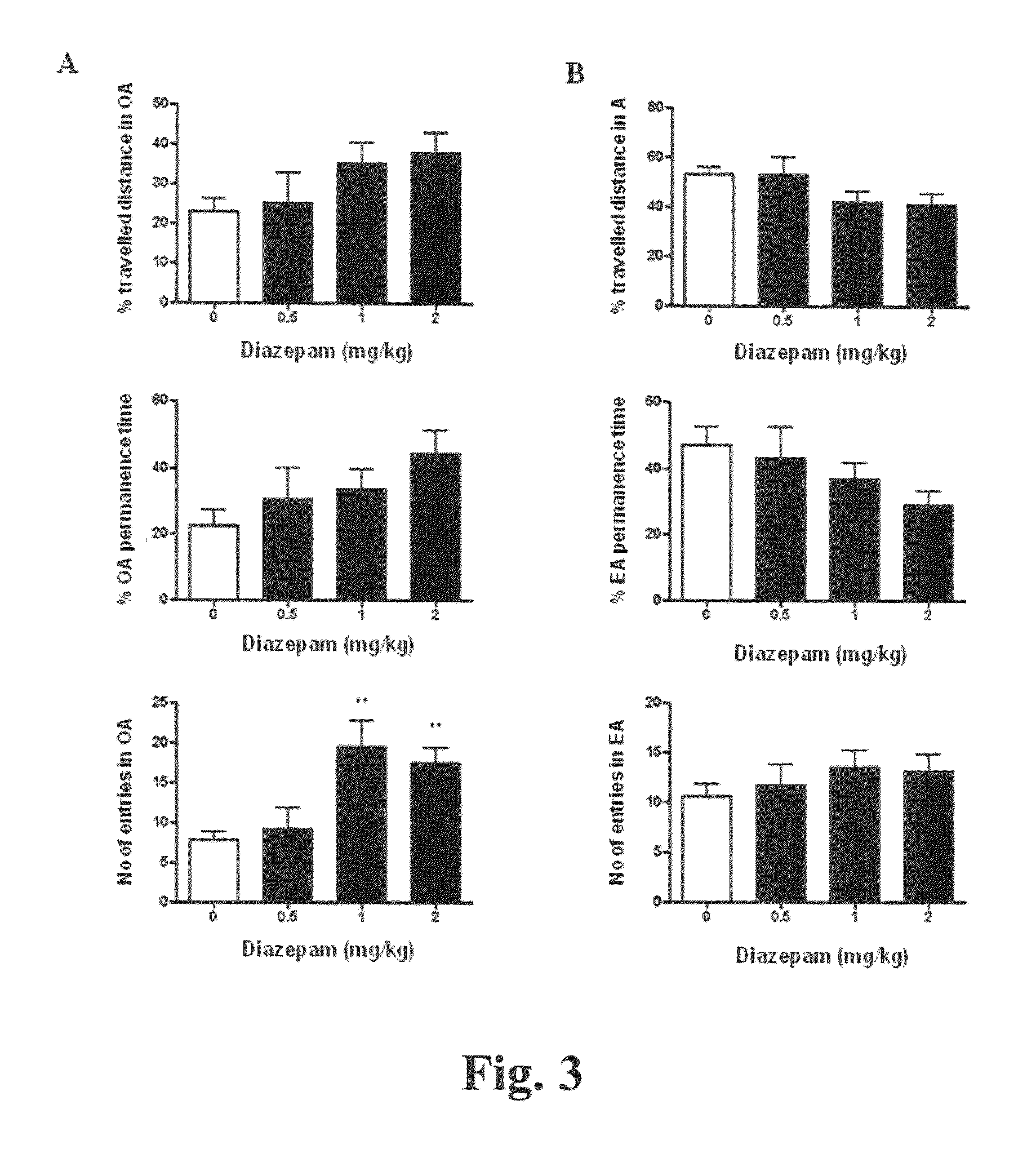Anxiolytic effect of pterostilbene
an anxiolytic and pterostilbene technology, applied in the field of anxiolytic effect of pterostilbene, can solve the problems of withdrawal symptoms, abuse liability, and long-term use is associated with side effects, and group also has drawbacks
- Summary
- Abstract
- Description
- Claims
- Application Information
AI Technical Summary
Benefits of technology
Problems solved by technology
Method used
Image
Examples
example 1
[0053]Pterostilbene was synthesized as previously described (Joseph et al., supra). Briefly, pterostilbene was synthesized by condensation of 3,5-dimethoxybenzaldehyde and 4-hydroxyphenylacetic acid in acetic anhydride and triethylamine. The reaction mixture was heated (150° C.) under an atmosphere of nitrogen and continuously stirred. After 20 h, the reaction was stopped and cooled to room temperature, and concentrated hydrochloric acid (5 mL) was added. A precipitate formed, and this was dissolved in 50 mL of chloroform and then extracted with 10% aqueous sodium hydroxide. The aqueous extract was acidified to pH 1 with concentrated hydrochloric acid and stirred for at least 6 h, resulting in the precipitation of the intermediate product, α-[(3,5-dimethoxyphenyl)methylene]-4-hydroxy-(αZ)-benzeneacetic acid. This intermediate product was heated with 1.0 g of copper in 10 mL of quinoline (200° C., 6 h, under nitrogen). The reaction mixture was cooled to room temperature ...
example 2
Effect of Pterostilbene in Murine Elevated Plus-Maze Behavioral Study
[0055]Eight-week old male Swiss Webster mice (Harlan, Ind., USA) weighing 24-30 gm at the time of testing were used for all studies. Animals were housed in groups of five, were given food and water ad libitum, and maintained under a 12:12 h day:light cycle. All mice were randomly selected for each treatment group. Housing, handling and experimental procedures were approved by the Institutional Animal Care and Use Committee (IACUC) of the University of Mississippi and adhered to the regulations of the National Institutes of Health Guide for Care and Use of Laboratory Animals.
[0056]For the Elevated plus-maze (EPM) study, the EPM apparatus consisted of two open arms (30×5 cm) and two enclosed arms (30×5 cm, walls 15 cm high) which extended from a common central platform (5×5 cm). The configuration formed the shape of a plus-sign with comparable arms arranged opposite one another. The apparatus was elevated 50 cm above...
example 3
Effect of Pterostilbene in Murine Spontaneous Motor Activity Behavioral Study
[0060]To measure spontaneous motor activity, adult Swiss Webster mice (n=8-10 / group) were administered with pterostilbene by oral gavage. Each mouse was then placed in the locomotor chamber and acclimated in the Plexiglas enclosure for 30 min. After the 30 min acclimation period, locomotor activity was measured for 30 min using an automated activity monitoring system (San Diego Instruments, CA, USA). Total activity was expressed as the total number of interruptions of 16 cell photobeams per chamber.
[0061]To illustrate the effect on spontaneous motor activity, we measured the locomotor activity of the animals after treatment with pterostilbene with doses ranging between 1 and 10 mg / kg (FIG. 3). One-way ANOVA indicated no significant effect of drug treatment on locomotor activity. Post hoc comparison showed that spontaneous motor activity was not affected by the maximal anxiolytic dose of pterostilbene. The h...
PUM
| Property | Measurement | Unit |
|---|---|---|
| particle size | aaaaa | aaaaa |
| pH | aaaaa | aaaaa |
| pH | aaaaa | aaaaa |
Abstract
Description
Claims
Application Information
 Login to View More
Login to View More - R&D
- Intellectual Property
- Life Sciences
- Materials
- Tech Scout
- Unparalleled Data Quality
- Higher Quality Content
- 60% Fewer Hallucinations
Browse by: Latest US Patents, China's latest patents, Technical Efficacy Thesaurus, Application Domain, Technology Topic, Popular Technical Reports.
© 2025 PatSnap. All rights reserved.Legal|Privacy policy|Modern Slavery Act Transparency Statement|Sitemap|About US| Contact US: help@patsnap.com



